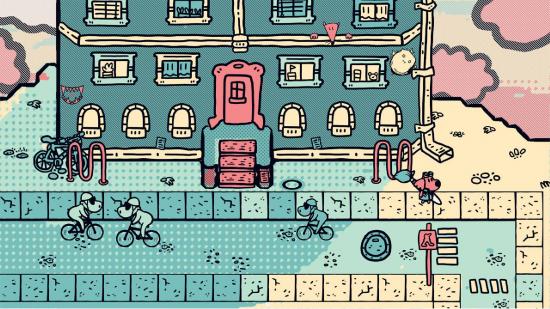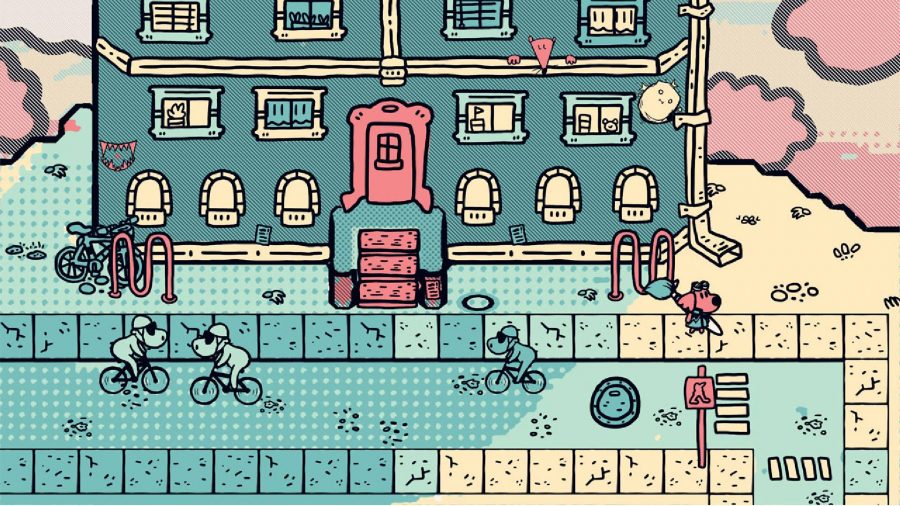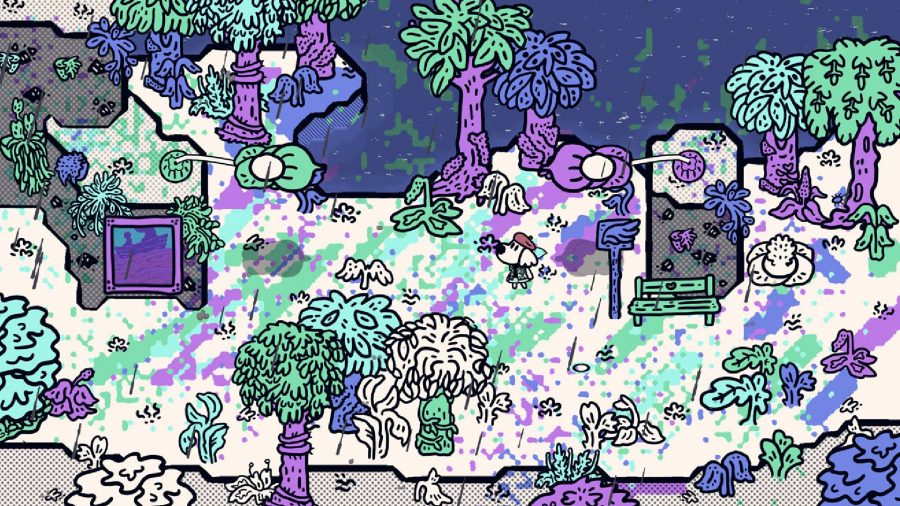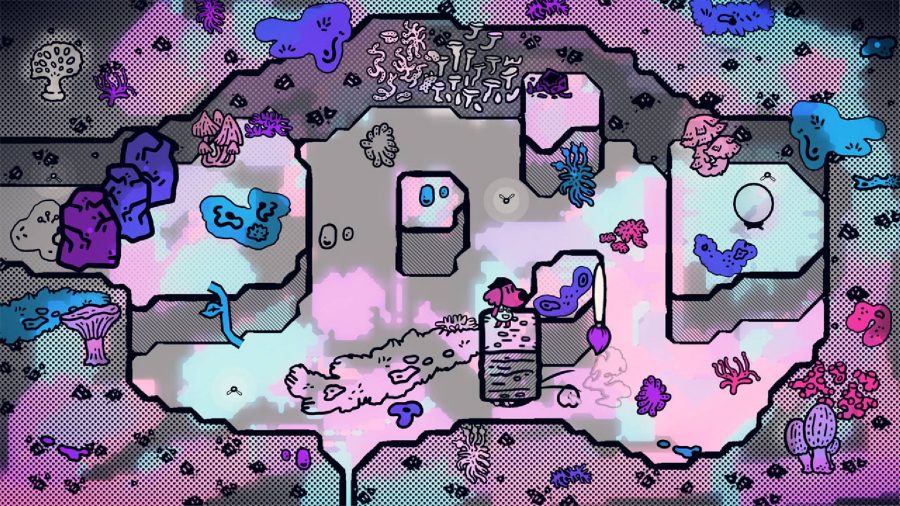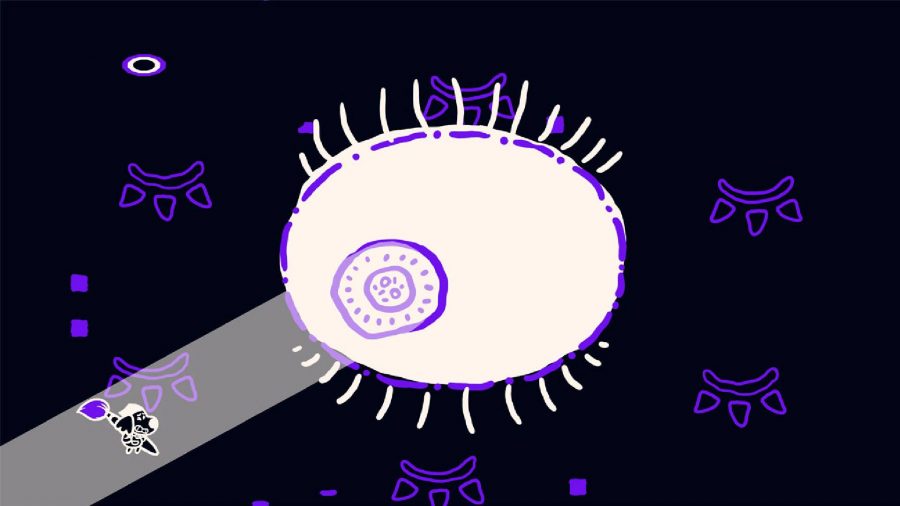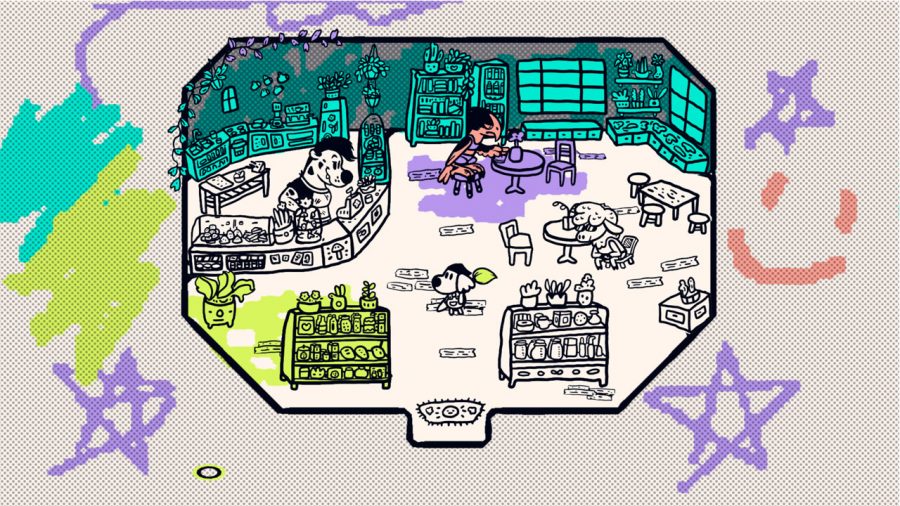Our Verdict
A beautiful realisation of the joy of playing, Chicory is an astounding use of the medium of video games that also leans heavily into the emotional weight of expectations and doubt. An incredibly real and human story is told with fantastic gameplay, and bringing the world of Picnic back to life is a journey I won’t forget.
There’s a famous saying that’s always stuck with me. George Bernard Shaw, an Irish playwright, once said “We don’t stop playing because we grow old; we grow old because we stop playing.” As a kid who loved being in bands and learning instruments, I had a lot of fun just playing around on my guitar or keyboard, seeing what happened and enjoying the process of learning.
Somewhere along the way, it stopped being about having fun, and became about being good, about success, and a lack of those elements took the joy away. Sometimes I wouldn’t play my guitar for months, because in my head it wasn’t getting me anywhere. Then I’d come home after a couple of beers, pick it up without thinking about it, and remind myself that simply strumming a few chords fills my heart with joy.
Chicory is a video game about that balance. It’s about the adult drive to make everything perfect, and how that deprives us of the joy of simple experimentation. On the road to perfection, there are a lot of steps along the way. Sometimes good, sometimes bad, but it doesn’t mean they can’t all be enjoyed. Because perfection doesn’t exist, and if you try to settle only for perfection, you’ll never be happy.
Chicory takes place in a gorgeous hand-drawn world called Picnic, where every area is named after some type of meal, and every character is named after a different dish. Upon starting the game, I was asked what my favourite food is, and so my character Lasagne was born. The adventure starts as Lasagne finds a magical brush, dropped by the famous wielder Chicory, and it soon becomes very obvious that all the colour has drained out of the world.
Why this has happened, and what reasons Chicory has, are best left to be discovered, but this is a game that isn’t afraid to peel back the layers of characters and explore the mental implications of failure and grandiose expectations. The world of Chicory was originally full of colour, and it was the wielder’s job to maintain that colour, so now Lasagne must complete that task and paint the town red, blue, and yellow.
My little Lasagne isn’t experienced though, they’re simply the janitor at Chicory’s house, and just happened to be the first person to find the famous brush dropped on the floor. So as they set out to bring colour back to adorably named locations like Luncheon, Potluck, and Elevenses, they come up against the obstacles of self-doubt and public expectation. It’s rare to see a game tie so many of its mechanical elements into its themes so beautifully, but Chicory absolutely succeeds in very literally expressing every idea it presents.
Simply exploring the world and splashing colour is a joy. Every square of the map starts completely white, and it’s up to you to fill it. Thankfully, the Switch has a few great control options here. Touch-screen controls feel absolutely perfect, especially with a stylus, though you still need to use both Joy-Cons for some controls. Simply using the analogue stick as a cursor works fine, if a little stiff, but I’d argue this isn’t about precision anyway.
Where I found the most success was with motion controls when using the two Joy-Cons, with one in each hand. If you played The Legend Of Zelda: Skyward Sword with motion controls you’ll get the hang of this. Holding each Joy-Con feels comfortable for the task at hand, while moving the controller to paint feels fantastic, reminding me of the excellent Okami port also on Nintendo Switch. It’s also worth mentioning that there are a lot of customisation options available, to curate the best control experience for you.
Even at its most basic, it’s simply a joy to swap between colours and bring each area to life. Characters ask you to colour their houses, or design things for them like shop signs, and while I wasn’t very good at it, I still enjoyed playing. The people of Picnic need colour brought back to this world, and the game goes to great lengths to ensure that this isn’t simply an objective to be met, or a box to be ticked, Chicory is a game about having fun, and what that artistic freedom brings to people around you as well.
This isn’t just a colouring book though, as you also have to try and find out why the colour drained from the world. Exploring each area you quickly find out that dark energy is taking over the world of Picnic and draining the life and colour out of different areas. Surprisingly, Chicory also has quite a lot of puzzles and almost dungeon-like areas, where interacting with the world is the key to advancing. I don’t know what I was expecting when I first saw screenshots of Chicory, but to say I was pleasantly surprised is an understatement.
The brush is the key to each puzzle, as using paint from it can light up caves, fill water balloon bombs, and even uncover hidden words on the wall of a dungeon. Paint is also absolutely essential to traversal, with abilities slowly unlocking and improving your
movement until the land of Picnic is a breeze to explore. As you become more accustomed to using the magic brush, these feelings are mirrored for your character becoming more confident in their abilities. It’s not about being perfect, it’s just about doing it because you improve along the way.
Another surprising element is that the brush is used for combat. At certain points, you fight manifestations of the dark energy taking over Picnic, and must beat them with paint. You’re hardly drawing pictures to save yourself, more just using the paint as a cursor to attack, but you still fill the screen with colour as you combat these dark forces. The combat is also surprisingly complex, demanding a careful balance of moving your character, while also paying attention to where you are using the brush. Each fight adds another layer, and I’m impressed by the ingenuity of each specific fight, even if they are somewhat brief.
Each gameplay element of Chicory just feels great. You spend a lot more time exploring and solving puzzles than in combat, but the joy of simply splashing paint around an empty canvas is a simple one that I never tired of. As you explore you also discover hidden items like trash, and a huge litter of lost kittens. Finding these and helping out the associated citizens rewards you with even more tools to decorate the world, and what starts out as a simple brush with a few adjustable sizes, eventually becomes a gigantic toolbox of different decorating methods.
How you colour each area is also remembered as you continue the game. When you zoom out to look at the map at any point, you can see exactly what colour paint you used and how it’s brought some lovely new hues to corners of the world that need it. It’s clear that the theme of the game is restoring faith, remembering joy, and building confidence in your abilities against your own self-doubt. But this map of Picnic is a nice reminder that it also doesn’t need to be perfect, as simply having some fun and splashing some colours adds up regardless.
Even finding hints in Chicory is given a lovely diegetic twist, as phone boxes around the world give you the option to call your parents for help. Your mum offers vague advice that points you where to go, and if you want it, your dad can offer you some very exact advice along the lines of “move two squares to the right and splash paint on a plant to make it pop up.” It’s especially lovely as your family is important to the development of your character. Facing the daunting prospect of being the new wielder isn’t easy, but both your family and the many previous wielders are there to help you bring colour back to the world.
By the second half of the game, you’re truly tested by the brush and the looming mental exhaustion of expectations. As you unlock more abilities the puzzles only get more and more complex, while navigating the world and its characters presents interesting new dynamics. The seemingly small world of Picnic is deceptive, as each area is richly populated with fascinating and lovely characters, and even the world beneath the surface is bigger than you might expect. There’s so much to do on your adventure, and you bring more colour into the world with each task.
While Chicory may look somewhat simplistic, deliberately aping a children’s colouring book, it presents each character with a sweet and distinct style, helping to sell the game’s often heavily emotional dialogue. The music is also fantastic, moving from an almost passively pleasant audio design to some more antagonistic tracks that perfectly soundtrack the more thrilling moments. It all works well alongside the deceptively sweet style of Chicory, lending the appropriate weight to darker stops along the way.
I only have a couple of small criticisms. Performance can be choppy sometimes. While normally it’s fairly smooth as you explore and colour, occasionally quickly painting a large area can make the framerate seriously chug. It’s very occasional, but quite noticeable. There are also minor bugs I encountered, such as when I picked up the game again after putting the console to sleep, the screen asking you to place the Joy-Con on a flat surface was dramatically zoomed in. Both very minor issues, but just things I came across.
Chicory is mechanically a great game that offers a lovely toolbox of artistic options and a world begging to be decorated. But in tandem with the themes of rediscovering passions, living up to expectations, of the crushing weight our own fears and doubts have on us and how they form the worst kind of creative block… It’s an astounding use of the medium of video games, to tell a story that simply couldn’t be done any other way.
It touched my artistic soul in ways I truly didn’t expect and made me cry on more than one occasion. In fact, it reminds me of how important it is to simply enjoy playing, and not to get caught up in the chase of perfection. Chicory has also found a perfect home on Switch, helping to deliver this beautiful experience on a platform that encourages play, and with control options perfectly suited to any player. In the 10-12 hours it takes to beat, you’ll hopefully rediscover in yourself why you like to play, and have a hell of a lot of fun along the way. Now please excuse me, I want to pick up my guitar for the first time in a while.
